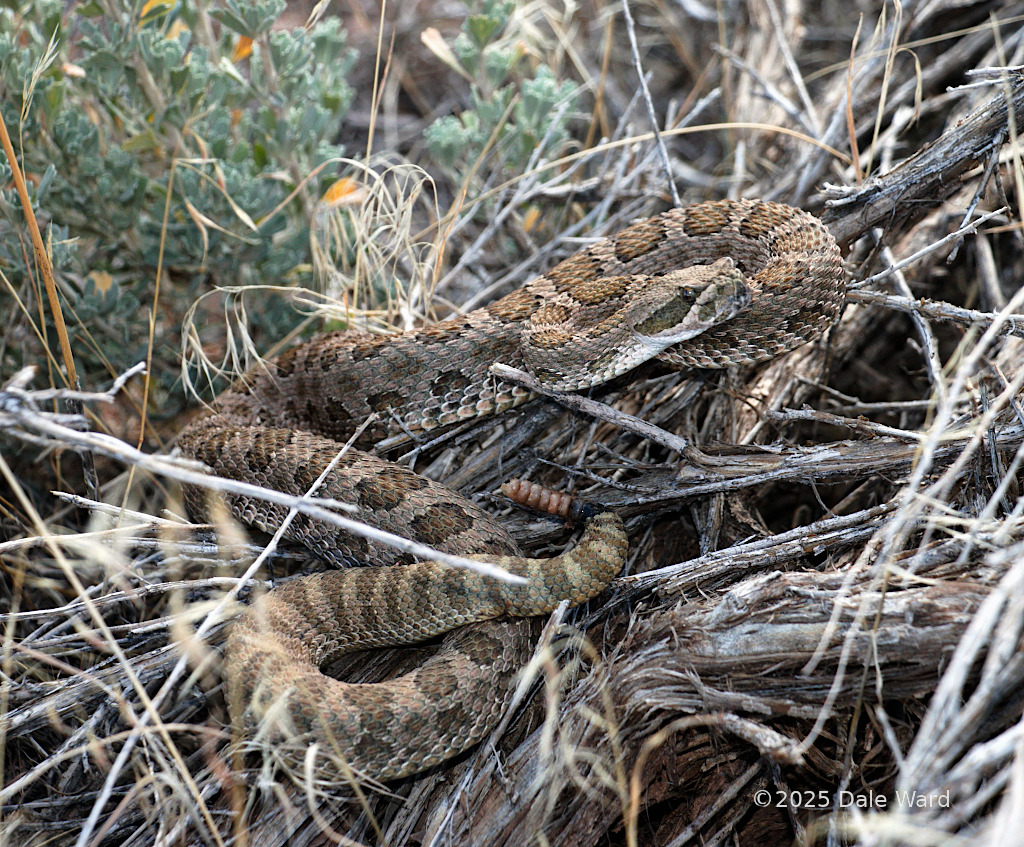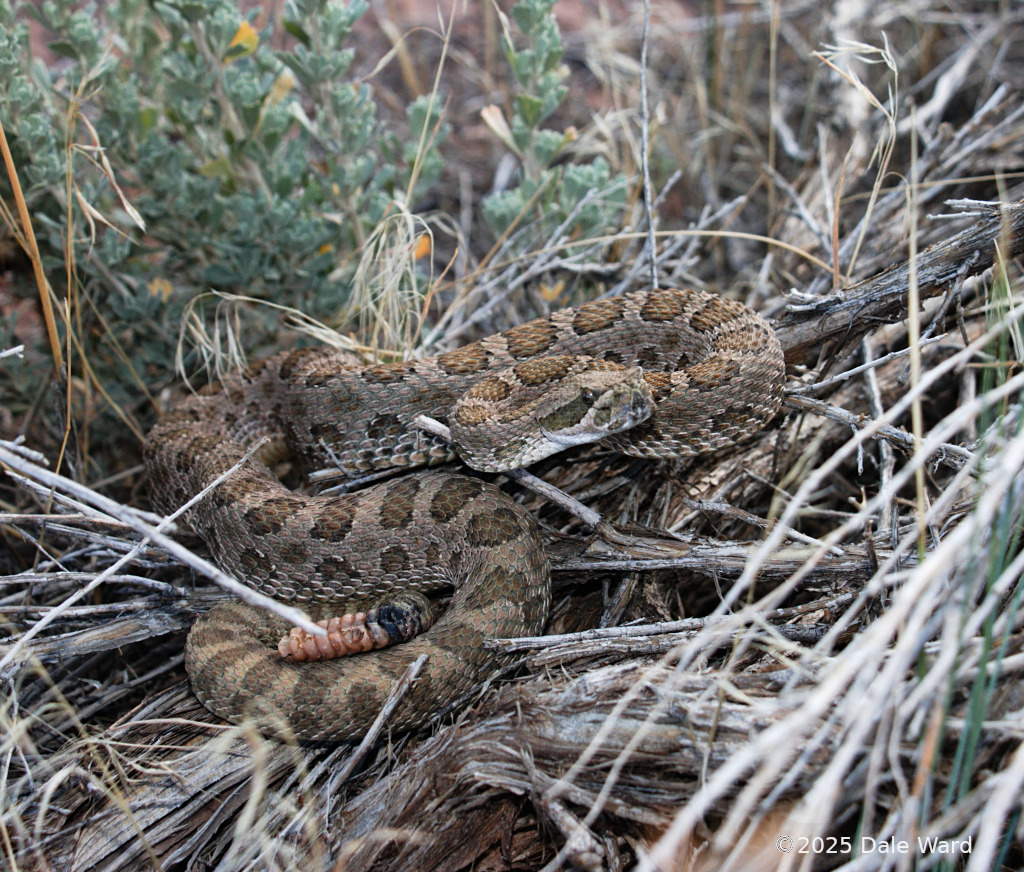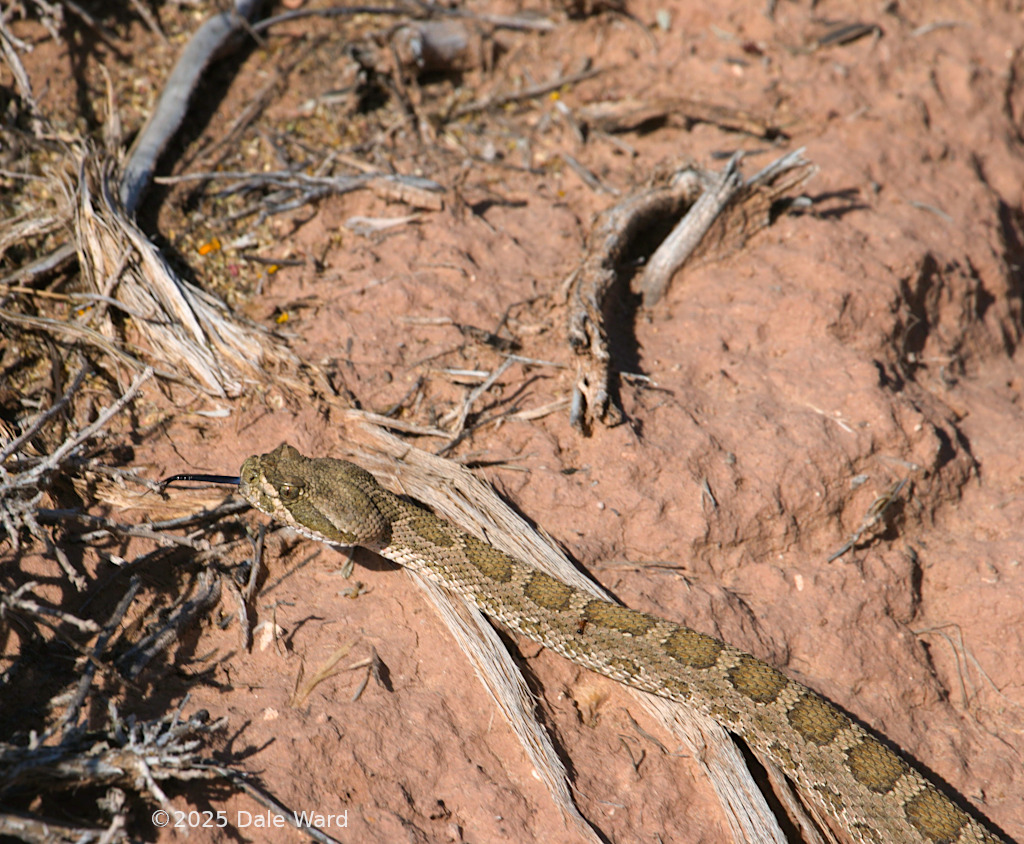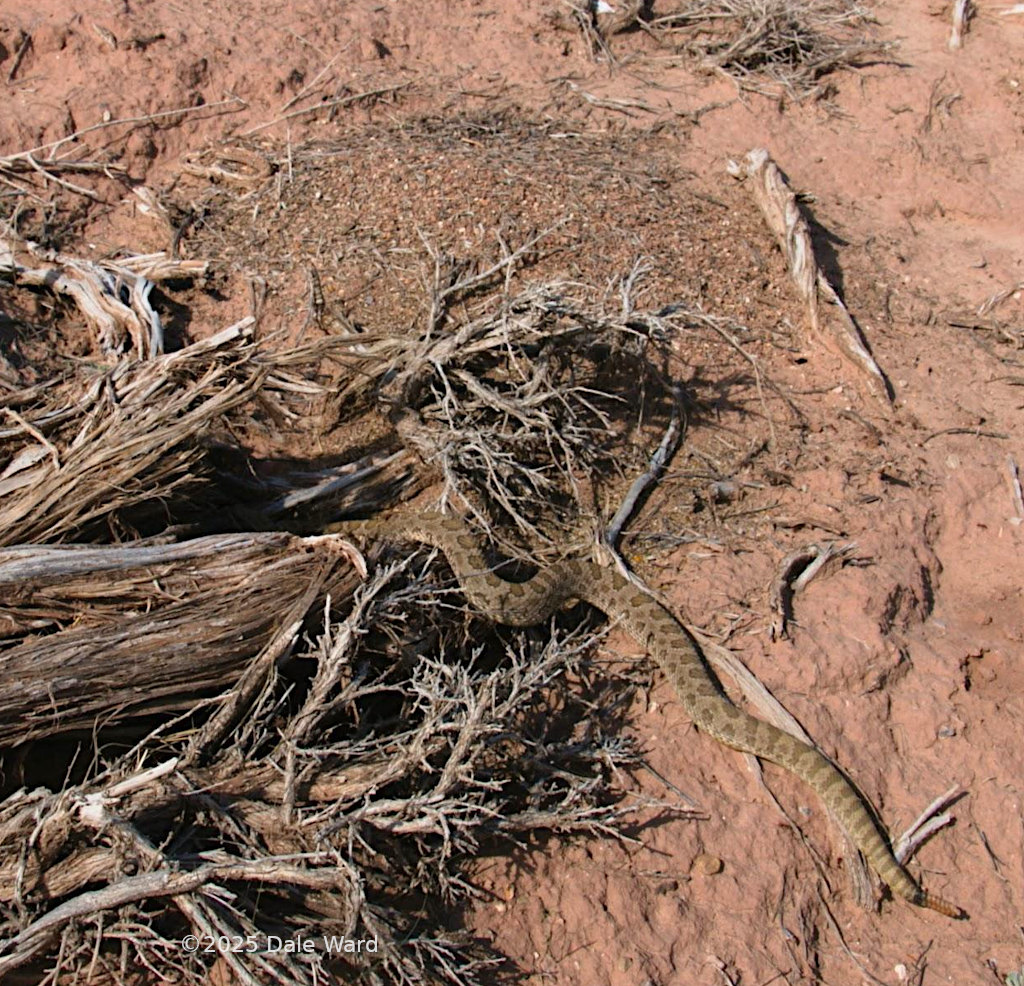An Encounter with a Midget Faded Rattlesnake
Coming across a Midget Faded Rattlesnake while out looking at my Spadefoot Toad tadpoles
 Midget Faded Rattlesnake in Sagebrush
Midget Faded Rattlesnake in Sagebrush
A couple of days ago, I was wandering through the desert scrub in Southeastern Utah. I came across a Rattlesnake.
The snake was near one of my Spadefoot tadpole pools, and was crawling on a patch of bare, hard-baked ground near the pool. When it became aware of me, it swam across a shallow part of the pool and coiled in a dead Sagebrush.
I walked over to the snake to watch it for a while. You can’t tell from these photos, but I was a safe distance away from the snake. I really like telephoto lenses.
The snake watched me intently as I took photos. The snake was obviously aware of me and trying to decide whether or not I was a threat. It seemed calm, and didn’t rattle.
 Midget Faded Rattlesnake watches me.
Midget Faded Rattlesnake watches me.
I loved the calm alertness of this snake.
After a while, the snake seemed to come to a decision. I wasn’t dangerous, but I was annoying.
He headed off to a brush pile that was next to a Western Harvester Ant (Pogonomyrmex occidentalis) nest, slowly flicking its tongue as it went.
 Midget Faded Rattlesnake crawling to brush.
Midget Faded Rattlesnake crawling to brush.
He crawled through the ants and disappeared into a dead Sagebrush stump.
 Midget Faded Rattlesnake crawls away, into the brush near a _Pogonomyrmex occidentalis_ nest.
Midget Faded Rattlesnake crawls away, into the brush near a _Pogonomyrmex occidentalis_ nest.
Kind of neat - the snake gave every impression of knowing exactly where it was going. My surprise speaks to a limitation on my part, I guess. After all, why would I be surprised that a snake would know where it’s going? It makes perfect sense, that a snake would know its territory.
I’m still seeing the world through blinders, I think.
Speaking of not seeing the world completely - I’ve been to this pool many times over the last month or so, and I spent the rest of the afternoon there on this day. I had not seen the snake on my previous visits, and I didn’t see the snake for the rest of the afternoon.
What else do I miss when I’m out and about?
I had a hard time figuring out what kind of Rattlesnake this was. The decision was between a Prairie Rattlesnake (Crotalus viridis), a Great Basin Rattlesnake (Crotalus lutosus) and a Midget Faded Rattlesnake (Crotalus concolor).
I looked in Rattlesnakes of Arizona, Volume I - it covers Southeastern Utah, as well. I had no idea that the taxonomy of Western Rattlesnakes was so up in the air. I think the description of the Midget Faded Rattlesnake fit “my” Rattlesnake the best. That, in combination with the range maps in Stebbins’ Field Guide to Western Reptiles and Amphibians, makes me think my snake was a Midget Faded Rattlesnake.
This decision had a fortuitous side effect: I’ve always wanted to see a Midget Faded Rattlesnake, and finally I have!
Biologists are a funny bunch.
Addendum October 14 2021: I was browsing through my copy of Hammerson’s Amphibians and Reptiles in Colorado today. I think it was written before the taxonomists had “split” Crotalus concolor (the Midget Faded Rattlesnake) from Crotalus viridis (the Prairie Rattlesnake). Dr. Hammerson mentions that one of the documented prey items of the Prairie Rattlesnake is Spadefoot Toads.
That’s interesting, in light of the fact that this snake was right next to one of my Spadefoot pools, a pool in which recently metamorphosed Mexican Spadefoot Toads were emerging.
I wonder if the Rattlesnake was hunting for Toads when I disturbed. I wish I’d seen the snake earlier, before it had seen me, so that I could have watched it longer.
Sources:
Hammerson, Geoffrey A. 1999. Amphibians and Reptiles in Colorado, Revised Edition. University Press of Colorado. ISBN 0870815342.
Stebbins, Robert C., and Peterson, Roger Tory. 2003. A Peterson Field Guide to Western Reptiles and Amphibians. 3rd Edition. Houghton Mifflin Harcourt. ISBN 0395982723.
Editor: Gordon W. Schuett, Martin J. Feldner, Charles F. Smith, Randall S. Reiserer and many others. 2016. Rattlesnakes of Arizona, Volume 1. ECO Wear & Publishing. ISBN 1938850181.